 The other day I had a conversation with some friends online about our experiences in gym class when we were growing up. Most of us disliked that class quite a bit growing up, and none of us came away from it with positive feelings about sports or exercise in general.
The other day I had a conversation with some friends online about our experiences in gym class when we were growing up. Most of us disliked that class quite a bit growing up, and none of us came away from it with positive feelings about sports or exercise in general.
There were many different reasons for those reactions, but the biggest ones had to do with our complete disinterest in sports and lack of athletic prowess in general.
This is a real shame. Physical Education teachers have a golden opportunity to show students how to stay fit regardless of how coordinated or athletic they might be. I empathize with how difficult it must be to get kids interested in gym class if they show up already expecting to hate it, but I’d also argue that there are a lot of changes that could be made to the way P.E. classes are run that will make them far more appealing to kids who aren’t athletic and who don’t think of exercise as a fun activity.
Today I’ll be sharing those recommendations. If there are any gym teachers reading this blog, I’d be quite interested in hearing your response to this post. These are the six things that I wish my gym teachers had done differently when I was in their classes.
Explained Why It’s Important to Exercise
 My English teachers regularly explained why it was important to know how to write a grammatical sentence or be familiar with certain authors. They used examples like writing a formal letter or understanding certain literary references that the vast majority of adults know.
My English teachers regularly explained why it was important to know how to write a grammatical sentence or be familiar with certain authors. They used examples like writing a formal letter or understanding certain literary references that the vast majority of adults know.
My math teachers told us how equations helped you save money or solve problems as an adult. They used examples like figuring out how much a sale item will cost after the 30% discount or calculating how many gallons of paint to buy when you repaint your living room.
None of my gym teachers ever made the connection between what they taught in class and what we’d need to know in order to function well as adults. We played endless rounds of basketball, football, volleyball, and other sports without hearing a single word about how exercise strengthens your heart, builds your muscles, burns calories, or reduces your risks of many different diseases.
It was like being given an equation that didn’t make sense and then never being told what the real answer should have been.
Because I said so isn’t a persuasive or helpful response in these scenarios. Kids, and especially teenagers, are smart enough to be told why they’re being expected to do something. It might be a while before they come to fully appreciate these lessons, but I think that explaining the reasons for gym class would go a long way to encouraging reluctant students to change their habits.
Taught Us the Proper Form
 I wasn’t the most coordinated kid in the world, so I’m definitely not going to lay all of the blame on the injuries I regularly received in gym class on the teachers.
I wasn’t the most coordinated kid in the world, so I’m definitely not going to lay all of the blame on the injuries I regularly received in gym class on the teachers.
There were multiple times when I sprained fingers or got bruised up in gym class.
Yes, some of them were true accidents that could have happened to any child.
With that being said, I do think I would have been injured much less often if we’d all been taught the proper posture for the sports we were playing and if someone had corrected my posture if it still wasn’t right.
This never happened once in all of my years of attending public school. As an adult, I sympathize with my teachers for being responsible for the physical education of so many kids. I don’t think we should expect perfection from teachers in this area, but I do think they should have the support and resources to prevent as many injuries as possible.
Eliminated Dodgeball and Picking Teams
 Dodgeball is the only sport I can think of where the purpose of it is to throw balls at people and purposefully hit them. I don’t know about you, but I remember feeling pain when those dodgeballs smacked me. This was not a pleasant experience in any way.
Dodgeball is the only sport I can think of where the purpose of it is to throw balls at people and purposefully hit them. I don’t know about you, but I remember feeling pain when those dodgeballs smacked me. This was not a pleasant experience in any way.
It’s one thing if a small group of friends decide to play this game at recess, but school isn’t an appropriate place to make kids to throw objects at each other.
If it happened in any other context, the kid who threw the object would be sent to the principal’s office and possibly even suspended or expelled for assault.
Picking teams is unnecessary, ripe for bullying behaviours, and a waste of time. It would be so much faster to divide the students by preassigning groups or having them count off (e.g. 1 through 4) so they could quickly be divided into four equal sections.
Spent 1/3 of the School Year on Non-Competitive Sports
 Yes, I know that many schools have limited budgets for their physical education departments and therefore can only offer certain types of workouts to their students.
Yes, I know that many schools have limited budgets for their physical education departments and therefore can only offer certain types of workouts to their students.
The schools I attended didn’t have anything fancy like swimming pools or tennis courts. We had gyms that always smell faintly of perspiration, plenty of old sports equipment, and far more wrestling mats than we knew what to do with.
With that being said, there are plenty of inexpensive and even free types of exercise out there that don’t require any competition at all.
For example, there would be little to no equipment needed at all for a P.E. teacher to teach martial arts or several different units on various types of dancing. The music for the dance classes could be piped in over the loudspeakers or played on an old boombox. Many types of martial arts don’t require any equipment at all.
Spent 1/3 of the School Year on Individual Sports
 One of the reasons why I hated gym class so much growing up is that 95% of the units we did were team sports.
One of the reasons why I hated gym class so much growing up is that 95% of the units we did were team sports.
Basketball, volleyball, baseball, football, and hockey might be good workouts, but they didn’t appeal to me in the least. The more I played them, the less open I became to exercising at all.
While I do think it was a good idea to expose kids to team sports, I’d also argue that it’s just as important to show students the many ways they can work out that have nothing at all to do with competition or teams.
There are so many other ways to strengthen your heart and body that could easily be taught to students depending on their ages and what types of equipment are already available at the school: yoga, weightlifting, jogging, bodyweight exercises, and gymnastics to name a few.
The final third of the year could be dedicated to various team sports. Some kids honestly do enjoy those forms of exercise, so I’d be fine with keeping them as a small part of the curriculum.
Occasionally Given the Students a Say
 This is by far the biggest change I’d recommend making to the way physical education classes are currently run.
This is by far the biggest change I’d recommend making to the way physical education classes are currently run.
My high school Spanish class was allowed to vote on which pre-approved Disney movie we wanted to watch after we’d studied that language for a while and were reading to start practicing our listening skills in real time.
One of my elementary school teachers regularly let us vote on which pre-approved book to read as a class next. This would be a little trickier to do in high school since certain authors are often required to be taught, but I could see a secondary English teacher narrowing down the choices to two or three Shakespeare plays and then seeing which one their class was most interested in studying over the next month.
Being able to have a say in those classes made me much more interested in reading those books and watching those movies.
There’s no reason why gym teachers can’t offer their students the same choice. Why not let them decide whether they’ll spend the next few weeks playing basketball or learning how to square dance? They’ll be exercising either way, and the fact that the teacher listened to them will mean a lot.
What were your experiences with gym class growing up? What could your P.E. teacher have done differently to get you more involved in that class?

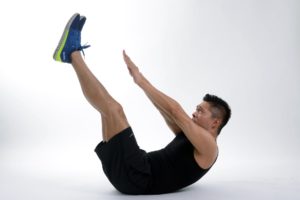 Its’s been a long time since my last workout thanks to a stubborn cold I caught weeks ago that only now seems to have faded away for good.
Its’s been a long time since my last workout thanks to a stubborn cold I caught weeks ago that only now seems to have faded away for good. For the past few weeks, I’ve had about as much stamina and energy as the sleeping cat in the picture on the left.
For the past few weeks, I’ve had about as much stamina and energy as the sleeping cat in the picture on the left. Happy Thanksgiving to all of my American readers! If any of my readers will be travelling anywhere soon, I hope you have a safe journey.
Happy Thanksgiving to all of my American readers! If any of my readers will be travelling anywhere soon, I hope you have a safe journey. You don’t have to go to the gym to improve your fitness. There are so many other ways to exercise, and many of them can be valuable forms of entertainment in and of themselves.
You don’t have to go to the gym to improve your fitness. There are so many other ways to exercise, and many of them can be valuable forms of entertainment in and of themselves. Lately, I’ve been thinking about some of the simplest lifestyle changes I made several years ago when I decided to take charge of my health and get into better shape. Getting into the habit of using a pedometer every day was at the top of that list.
Lately, I’ve been thinking about some of the simplest lifestyle changes I made several years ago when I decided to take charge of my health and get into better shape. Getting into the habit of using a pedometer every day was at the top of that list. Unlike many other forms of exercise, walking doesn’t require a gym membership, special equipment, or protective gear. The only thing you need other than a pair of comfortable walking shoes is a pedometer. I’ve seen pedometers for sale for as little as $5 to $10 each.
Unlike many other forms of exercise, walking doesn’t require a gym membership, special equipment, or protective gear. The only thing you need other than a pair of comfortable walking shoes is a pedometer. I’ve seen pedometers for sale for as little as $5 to $10 each. I know I’ve mention this several times before in previous posts, but it is incredible to see how much easier all kinds of tasks are when you’re physically capable of lifting heavier loads.
I know I’ve mention this several times before in previous posts, but it is incredible to see how much easier all kinds of tasks are when you’re physically capable of lifting heavier loads.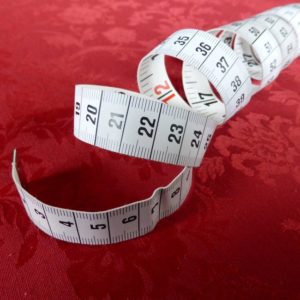 While weight loss was one of my original goals when I first began working out again, I didn’t realize how much my body would begin to change as a result of lifting weights in ways that had nothing to do with how much I weighed.
While weight loss was one of my original goals when I first began working out again, I didn’t realize how much my body would begin to change as a result of lifting weights in ways that had nothing to do with how much I weighed.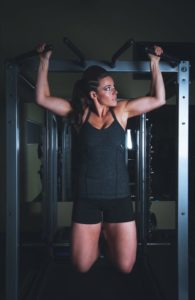 I was never one of those kids who excelled at or looked forward to gym class. The schools I attended focused very heavily on team sports for physical education. While that may have been motivating for students who enjoyed and were good at basketball, football, or volleyball, I sure wasn’t one of them.
I was never one of those kids who excelled at or looked forward to gym class. The schools I attended focused very heavily on team sports for physical education. While that may have been motivating for students who enjoyed and were good at basketball, football, or volleyball, I sure wasn’t one of them.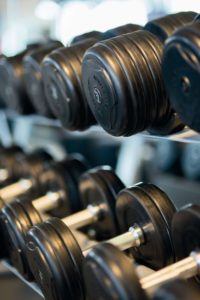 Today I’m going to be talking about the parts of weightlifting that I hate.
Today I’m going to be talking about the parts of weightlifting that I hate.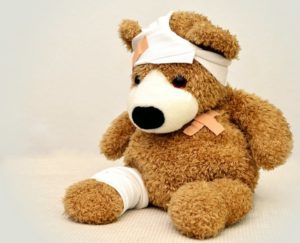 This isn’t something I’d recommend to anyone who isn’t willing to put in the time to learn how to do it safely. One of the benefits of walking is that it’s pretty difficult to hurt yourself when you’re on a walk. There might be an occasional slip and fall in slippery conditions, but other than that a walk can be taken safely regardless of your posture, how you move your body, or how much attention you’re paying to your surroundings.
This isn’t something I’d recommend to anyone who isn’t willing to put in the time to learn how to do it safely. One of the benefits of walking is that it’s pretty difficult to hurt yourself when you’re on a walk. There might be an occasional slip and fall in slippery conditions, but other than that a walk can be taken safely regardless of your posture, how you move your body, or how much attention you’re paying to your surroundings. One of the things I found most surprising about improving my fitness was how much the small decisions I make every day can accumulate over time.
One of the things I found most surprising about improving my fitness was how much the small decisions I make every day can accumulate over time. I’m writing this portion of today’s post with the knowledge that some people want to quit certain habits cold turkey and leap into long, challenging workouts right away. If that’s what works best for you, great!
I’m writing this portion of today’s post with the knowledge that some people want to quit certain habits cold turkey and leap into long, challenging workouts right away. If that’s what works best for you, great! One of the things I found most frustrating about lifting weights in the beginning was how much time it took to notice any tangible results from my workouts.
One of the things I found most frustrating about lifting weights in the beginning was how much time it took to notice any tangible results from my workouts.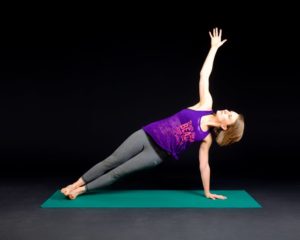 I’m a firm believer in celebrating every success if you’re having trouble perfecting a specific move or need some encouragement as you grow stronger and fitter.
I’m a firm believer in celebrating every success if you’re having trouble perfecting a specific move or need some encouragement as you grow stronger and fitter. Those of you who have known me a long time probably won’t be surprised by the first item on this list. For everyone else, let’s just say that I find a lot of joy in keeping track of all kinds of statistics for the pure pleasure of being able to go back and look at them on occasion to see how they’ve changed over time.
Those of you who have known me a long time probably won’t be surprised by the first item on this list. For everyone else, let’s just say that I find a lot of joy in keeping track of all kinds of statistics for the pure pleasure of being able to go back and look at them on occasion to see how they’ve changed over time. Getting into a regular workout routine was easier for me than adjusting my diet, but I didn’t start losing weight until I took a closer look at what I was eating and changed it. I don’t believe in the concept of “forbidden” foods, but there were some tweaks I needed to make in order to become healthier in general.
Getting into a regular workout routine was easier for me than adjusting my diet, but I didn’t start losing weight until I took a closer look at what I was eating and changed it. I don’t believe in the concept of “forbidden” foods, but there were some tweaks I needed to make in order to become healthier in general.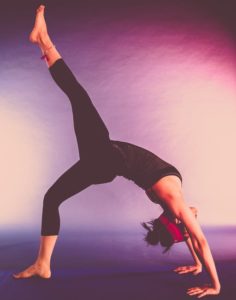 Nearly all of the workouts I did at first were cardio, and many of them were of various types of dancing. As much as I enjoyed it, I wish I’d started weightlifting regularly sooner than I did.
Nearly all of the workouts I did at first were cardio, and many of them were of various types of dancing. As much as I enjoyed it, I wish I’d started weightlifting regularly sooner than I did.